
Table of contents:
- Author Bailey Albertson [email protected].
- Public 2024-01-17 22:26.
- Last modified 2025-06-01 07:32.
Construction, operation and repair of roofs using mastic

The use of mastics for roofing private houses without roll materials is a relatively new technology for our country. But it is rapidly gaining popularity thanks to new materials that allow you to do this work yourself at minimal cost.
Content
- 1 What is mastic
- 2 Mastic roof: its arrangement and operation
-
3 Materials for mastic roofing
3.1 Photo Gallery: Applications
-
4 How to make a mastic roof
- 4.1 Video: liquid roofing - general use
- 4.2 Applying mastic to pitched roofs
-
5 The procedure for arranging mastic roofs
5.1 Video: roof waterproofing - mastic repair
- 6 Features of operation
- 7 Repair of mastic roof
What is mastic
The basis for the manufacture of a mastic roof is bituminous and polymer-bitumen material in various forms. Mastic is an elastic formation similar to rubber when hardened. It retains its properties in a wide temperature range from -50 to +120 o C, which is an undoubted advantage of the material in the climatic conditions of our country.
Mastic is considered the most reliable roof coating for tightness. This coating is also considered the most durable and wear resistant. Mastics are very convenient when performing repair work, when you need to apply a patch in the place of damage to the roof covering. In particular, membrane roofs are repaired with mastic.

The mastic coating is considered the most airtight and wear-resistant
Mastic roof: its arrangement and operation
A mastic roof is usually installed on flat roofs and is made without roll materials. For this, a fluid substance that polymerizes in the open air is used. Bituminous mastics show the greatest adhesion to concrete, metal and bituminous bases. The use of this material for the execution of abutments is very effective.
Polymeric insulating materials in the form of mastics are used both in individual construction and in the construction of industrial facilities. They are compositions of several components that are applied to the surface by pouring, followed by uniform distribution over the covered surface. Roofs processed in this way are called bulk roofs. The technology of sputtering an insulating layer is also used.

Mastic roofs can be made not only by filling, but also by spraying
One of the advantages of such roofs is their low weight.
Materials for mastic roofing
The following requirements are imposed on the materials for the manufacture of the finishing roofing:
- Easy and even placement on the base of the roof.
- The absence of fumes of substances harmful to human health in an amount exceeding the established sanitary standards. The material must be environmentally friendly.
- Homogeneous structure without inclusions of foreign substances. Additives from septic tanks and fillers should be part of the main binder.
- Stable condition of the material throughout the entire period of operation.
- Tightness, chemical and thermal resistance over a wide temperature range.
Technologically, mastic is divided into two states - hot and cold. The first is used at temperatures of 120-160 o C and is delivered to construction sites by special transport. The second is hot mastic in a frozen form. To give it a viscous state, solvents are used - gasoline or kerosene. Cold mastic is easier to use as there is no need for heating devices. It is used for gluing roll materials or forming a layer of vapor protection.
To form a continuous insulating layer of roofs, mastic is suitable only in a hot state.
Photo gallery: methods of application
-

Placing a layer of mastic manually - With manual application, it is difficult to maintain the required layer thickness
-

Applying a mastic layer with heating - Additional heating improves material flow
-

Laying reinforcing mesh on cold mastic - Reinforcement significantly increases the strength of the mastic coating
-

Hot mastic supply to the roof -
A heated device with a powerful pump can be used to feed material to a height
The composition of mastic materials includes various components:
- the base is bitumen, polymers or polymer-bitumen mixtures;
- fillers - lime, small broken brick, asbestos or quartz ash. These additives provide the strength of the roof and also reduce the need for the base material during manufacture.
To increase the strength of the mastic roof, it is customary to reinforce it with fiberglass or fiberglass. For this, the roof is formed in layers: first, the first layer is created, which is allowed to dry, then the reinforcing material is laid, and the finishing layer is poured on top of it. The upper protective layer is a special paint that can withstand UV radiation, or a mixture of the same mastic with fine gravel.

To increase the strength of the mastic roof, fiberglass reinforcement is used
As a result, at the end of the work, an elastic and durable coating is obtained that does not contain crystalline structures capable of cracking. The service life of mastic roofs is about 15 years. Preventive and maintenance repairs are recommended every five years.
How to make a mastic roof
Roofs made of mastic are reasonably considered the best, capable of reliably protecting the roofing array from moisture, impact and accelerated wear. Often, mastic is used as an auxiliary material for sealing roof sections of complex configuration or repairing damaged areas.
The positive qualities of mastic roofs include:
- increased elasticity, which allows you to form a reliable protective film even on uneven parts of the roof;
- high tightness;
- reliable protection of the roof space from various types of precipitation;
- high thermal stability, which we mentioned above;
- good strength indicators;
- minimum material and labor costs when performing work;
- the integrity of the monolithic coating, which guarantees water and vapor impermeability;
- the possibility of reinforcement with any number of layers that increase the strength of the coating.
A specific requirement that can be considered a disadvantage is the need to apply very thin layers. Such work can only be done using special equipment. The mastic is applied manually only in hard-to-reach places, such as skates, grooves, abutments and ribs, where it can be done in a fairly thick layer.
When working with mastic, the weather should be dry and calm. The sequence of actions is as follows:
- Preliminary preparation of the base is carried out, consisting in thorough cleaning of the surface from debris and dirt. Particular attention should be paid to oil stains, using any solvent for cleaning.
- The material is supplied to the roof by special installations, which include a pump and a mastic mass heating device.
-
The mastic is poured onto the roof and several people spread it in a thin layer over the plane using scrapers. In places with irregularities, rollers are used, and folded paint brushes made of natural bristles can be used to form abutments.

Pouring mastic roof The mastic is leveled with special scrapers or rollers
If necessary, gas-flame burners are used to heat the mass during its placement.
Video: liquid roofing - general use
Applying mastic to pitched roofs
On pitched roofs, the mastic is applied in several layers. Their number is determined by the angle of inclination of the roof:
- If its value lies in the range of 2-11 degrees, then you will need to apply 3 layers of mastic and two layers of reinforcing mesh. This need is associated with a low rate of water flow from the roof. On top of the face layer, you need to arrange a backfill with fine gravel or washed river sand to protect the surface from ultraviolet radiation. This should be done immediately after application to fresh material. You can also use the surface painting with silver.
- At an angle of inclination of 10-15 degrees, you will need 2 layers of mastic and 2 - reinforcing mesh. Surface protection is done in the same way.
-
When the slope is tilted 15-25 degrees, 2 mastic and 1 reinforcing layer are applied, and then external protection is created.

Mastic coating on the slope The mastic coating significantly increases the lifespan of the pitched roof
The device of additional layers will be needed when working on skates, gutters, valleys, eaves and places where chimneys pass through the roof of the building.
When installing roofs of this type, the following conditions must be observed:
- Before applying the mastic, prime the base with 3-4 layers of primer. What composition to use and how to use it is indicated on the packaging of the mastic.
- The thickness of each layer of the base material should be 0.7-1.0 millimeters.
- The next layer of mastic is applied only after the final hardening of the previous one.
The number of mastic words applied depends not only on the slope of the roof, but also on the mode of operation.
The procedure for arranging mastic roofs
Fiberglass can be used to reinforce the mastic mass. For this, the fiberglass is cut into small pieces and thoroughly mixed with mastic. This composition can be applied in a thin layer.
The technological process for the device of mastic roofing is as follows:
- First of all, it is necessary to prepare the bearing surface, check the slopes and reinforce problem areas at the joints of the plates. To do this, mastic is manually applied to the desired place and a reinforcing fiberglass mesh is laid.
-
In places where the waterproofing is adjacent to structures, it must be raised in height by at least 10 centimeters.

Processing of junctions In places of abutment to vertical surfaces, a layer of mastic is laid to a height of at least 10 cm
- Insulation and screed must be installed in the same way as when installing a roll roof.
- An important point is the priming of the bearing surface. It also needs to be done in a thin layer up to one millimeter. The mastic layer is applied immediately after the primer dries, otherwise the surface will have to be cleaned of dust again.
-
The application of the mastic coating should be started from remote points from the point of entry to the roof. They start from the lower points, moving up.

Mastic coating You need to start applying mastic from the far corners, gradually approaching the place where you exit from the roof
- If there are lanterns on the roof, they are processed first.
- It is imperative to apply the protective layer as described above.
Mastic roofs can last long enough if you make a thorough annual inspection and eliminate the deficiencies noticed.
Video: roof waterproofing - mastic repair
Features of operation
The main danger of mastic roofs is water. Therefore, after every heavy shower, an inspection of the roof covering is required.
- Inspection must begin with the under-roof space. It should be borne in mind that the location of the leak inside does not always correspond to the location of the damage to the roof outside. Nevertheless, it must be detected and repaired.
- Next, you need to inspect the outside of the roof. It is necessary to remove all debris from the roof - leaves, blown by the wind, branches and other dirt. The detected swelling of the roof covering must be removed immediately, they are formed due to the presence of moisture under the covering. The primary task is to determine the place of its receipt and close it up.
- During the inspection, it is also necessary to inspect the condition of the drainage system, clean it of contamination, and eliminate malfunctions.
- It is impossible to remove snow from the roof when using a mastic roof. In case of special need, it is allowed to remove the top layer, while only using a wooden shovel. Metal tools and crowbars are not permitted.
Mastic roof repair
Operations for the repair of mastic roofing are carried out in the following cases:
- When cracks form in the topcoat. They must be sealed using polymer-cement mortar.
- If the tightness is broken at the points of adjoining to the gutters and at the interface with a funnel for water removal. In such a situation, the embedding is done with epoxy compounds ED-5 or ED-6.
-
When delamination of the concrete base is detected. Such a place must be cleared and concrete crumbs removed. The solid base is dust-free. On the surface after cleaning, it is necessary to apply a primer made of polyacetate dispersion, diluting it in a 1: 1 ratio with water. After drying, the damage is filled with polymer-cement mortar. If the depth of the damage exceeds 8 millimeters, a fine metal mesh made of wire 0.7-1.2 mm thick must be laid in it.

Repairing damage on a mastic roof Cracks in the coating are closed by applying several layers of mastic and polymer cement mortar
The surface of polymer cement, which solidifies during the day, must be protected from moisture using any available method.
If the total area of lesions on the surface of the roofing cake reaches about 40%, it is necessary to completely renew the top coat. In preparation for this work, you need to remove and clean up all damaged areas and thoroughly clean the roof of debris. After that, one or two continuous layers of mastic are applied, depending on the condition. The creation of a protective coating of fine gravel or sand is mandatory and is carried out with wet mastic.
A reliable and durable mastic roof needs constant monitoring of its condition and measures to eliminate minor malfunctions. But this work is not time consuming and does not require the use of additional equipment. You just need to have a small repair kit, which is naturally created when performing such work. I wish you success!
Recommended:
Inverted Roof, Its Structure And Main Elements, As Well As Features Of Installation And Operation
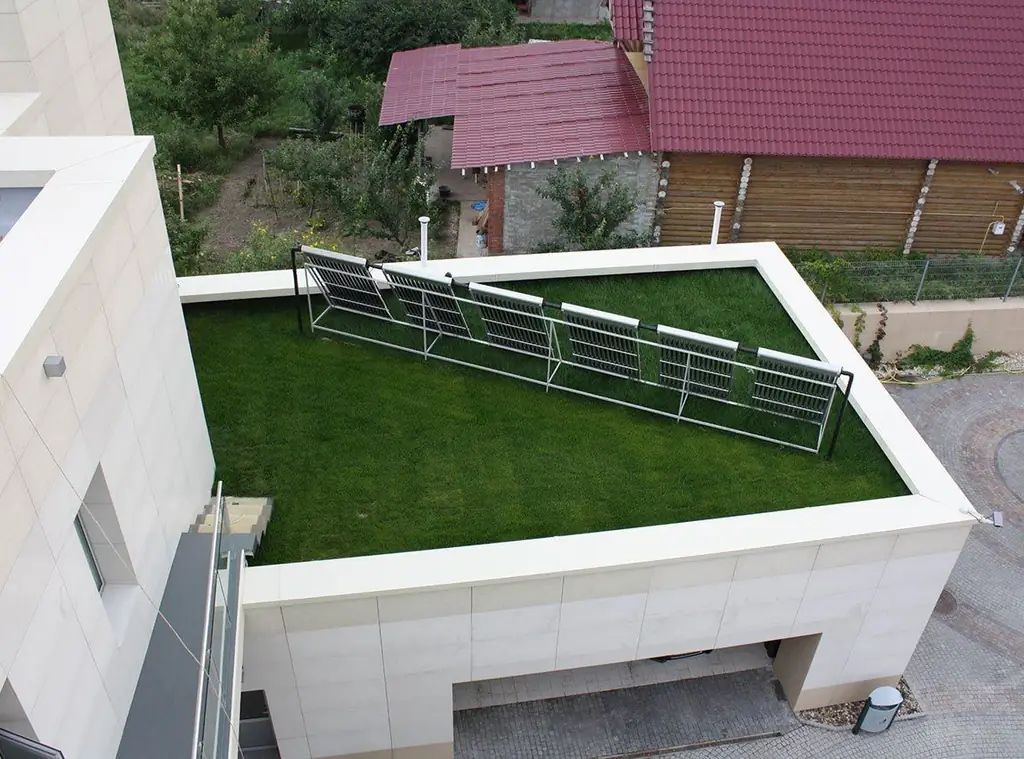
What is an inversion roof. Inverted roof types. What materials can be used. DIY installation of an inverted roof. Operating rules
Copper Roof, Its Structure And Main Elements, As Well As Features Of Installation And Operation
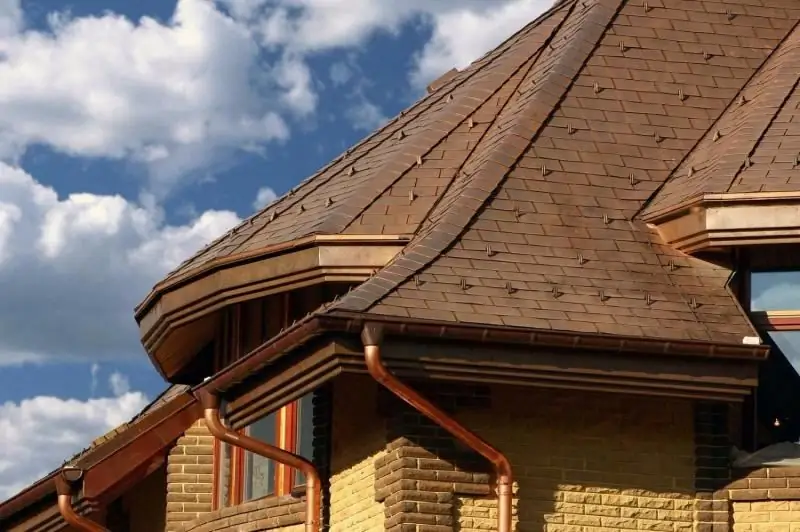
Copper roof, its types and advantages. Installation of roll and tiled copper roofs and features of their installation. Copper roof maintenance and repair
Liquid Bulk Roof, Its Structure And Main Elements, As Well As Features Of Installation And Operation
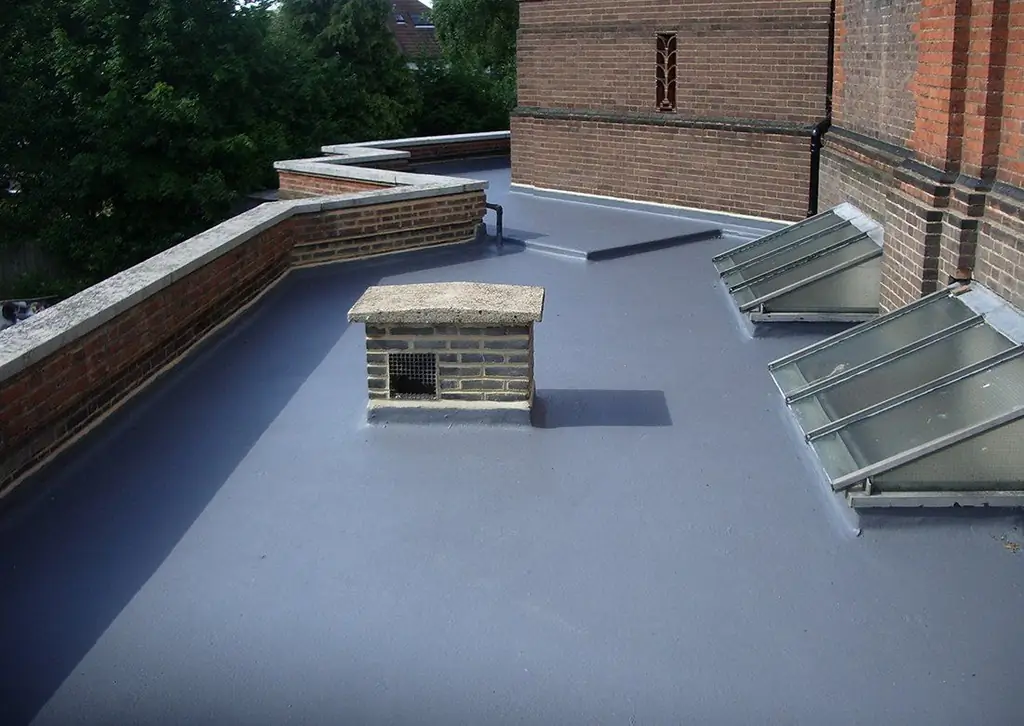
What are the properties of a liquid roof. How does it differ from other roofing materials. Liquid rubber roofing instructions
Wooden Roof, Its Structure And Main Elements, As Well As Features Of Installation And Operation
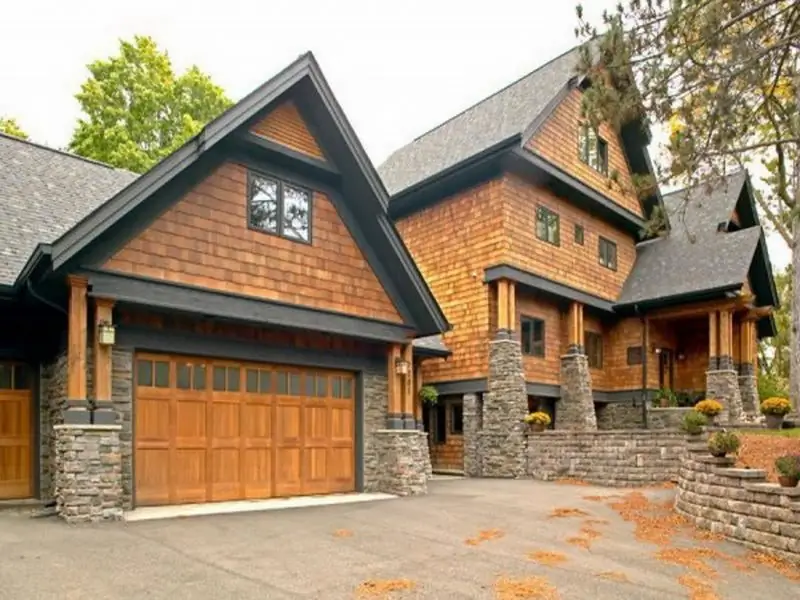
What is a wooden roof. What materials is it made of. Installation of a wooden roof and its features. Safety and operation
Broken Mansard Roof, Its Structure And Main Elements, As Well As Features Of Installation And Operation
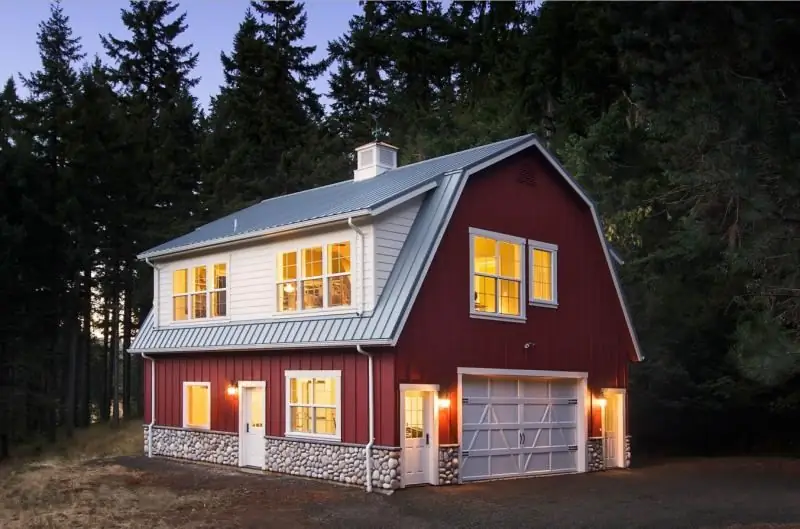
Brief description of the mansard sloping roof. The device of the rafter system. Calculation of the cross-section of the rafters. The procedure for installing a sloping roof and the rules for its operation
